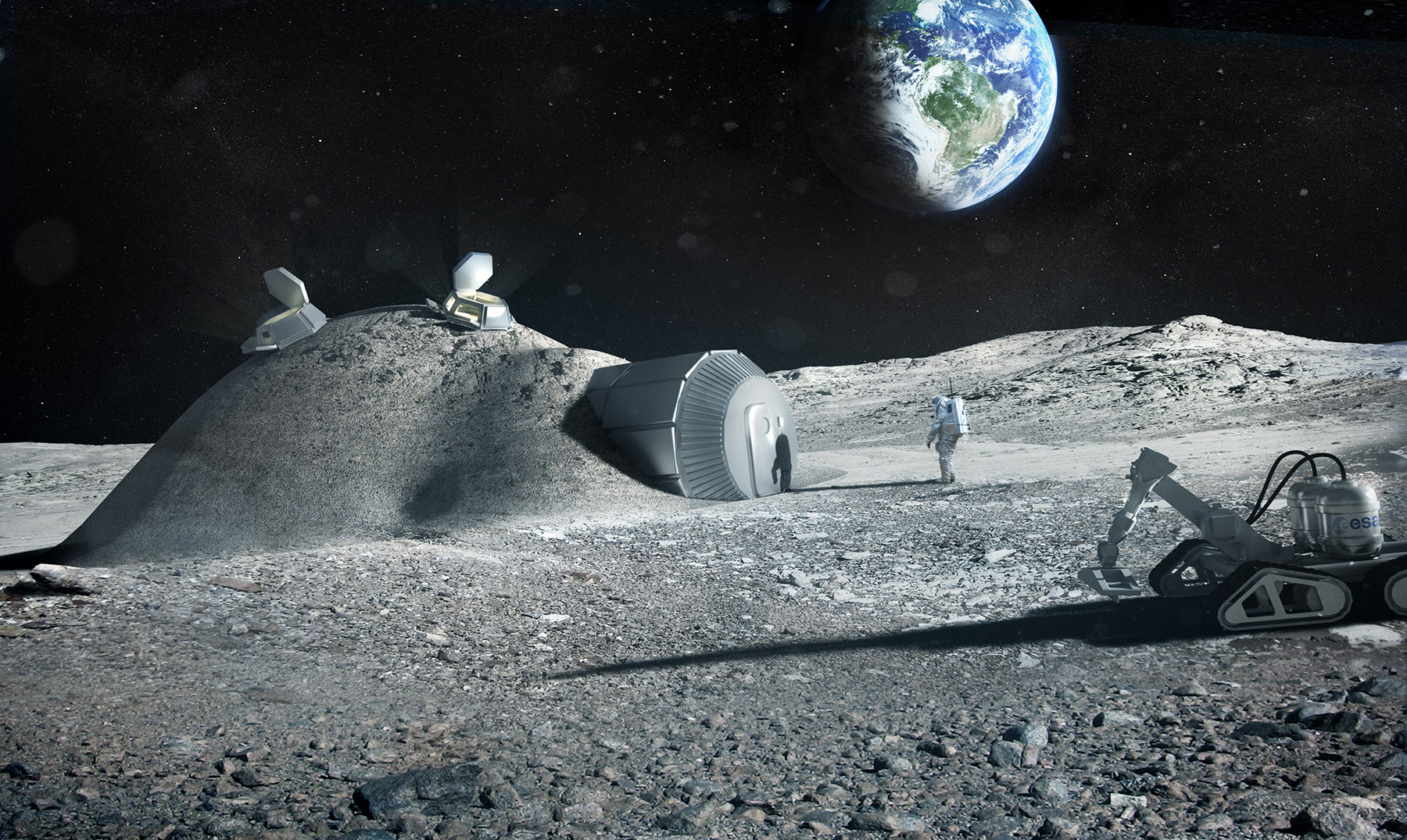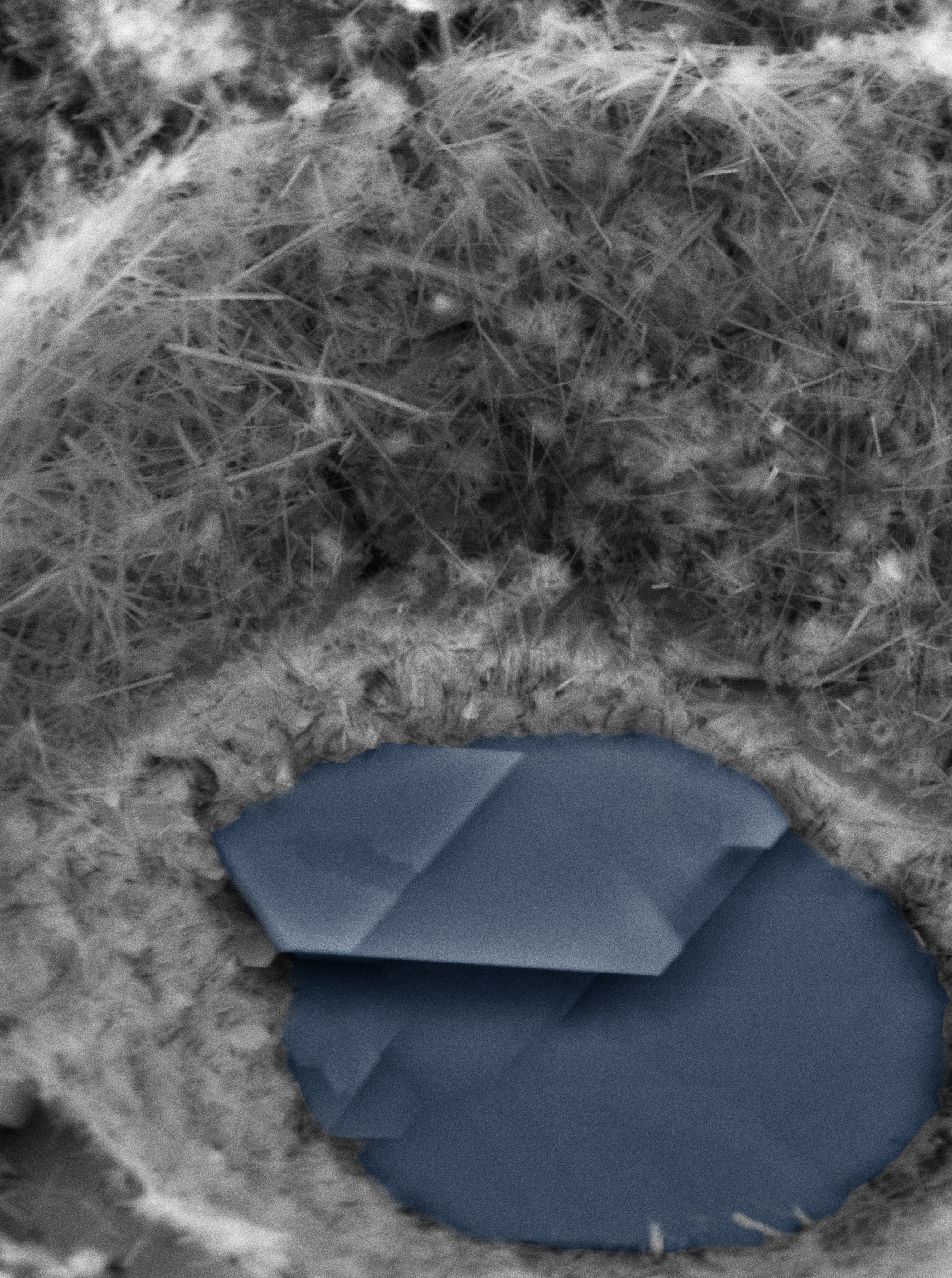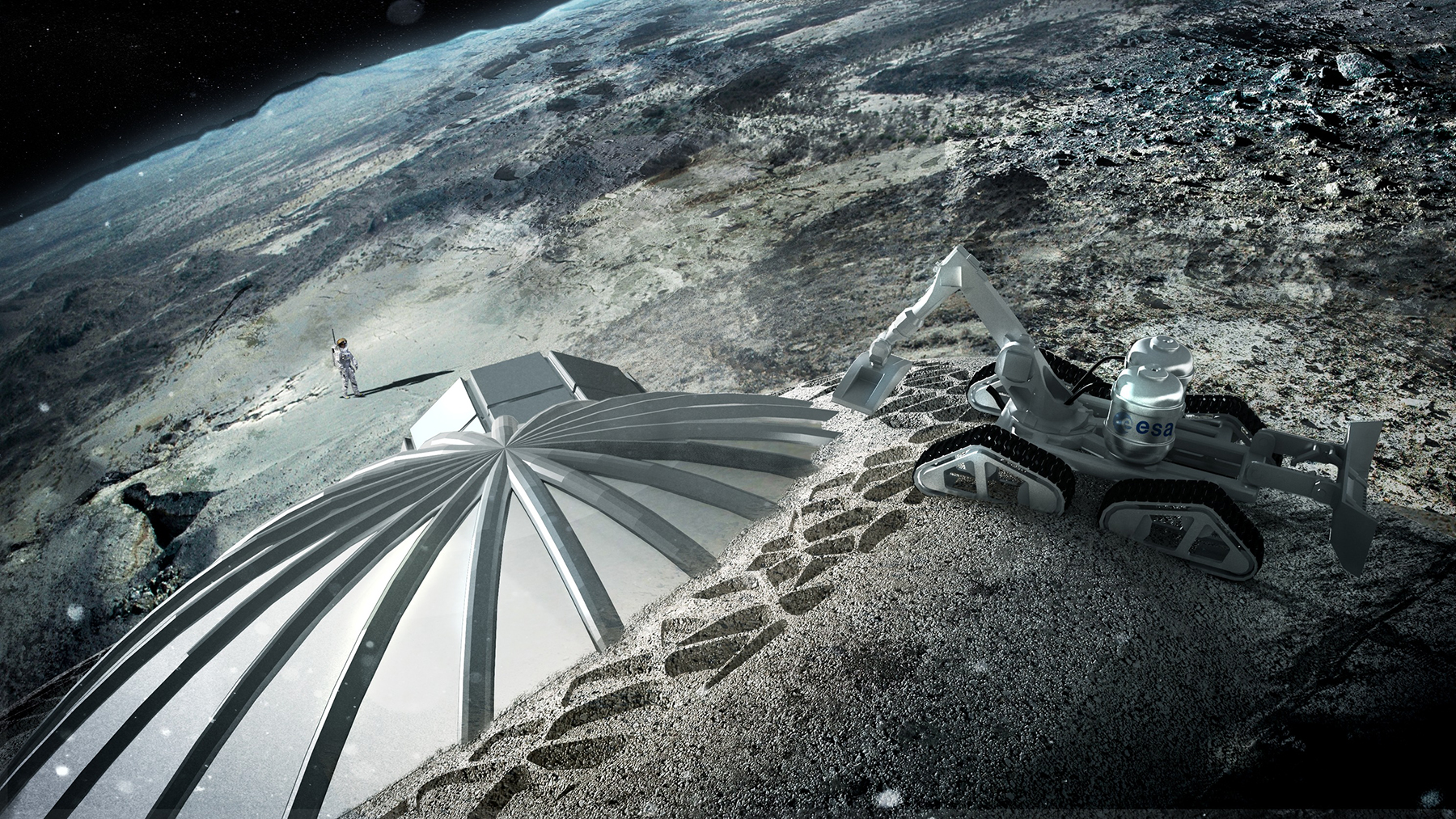By Robert L. Reid
Although it has been almost 50 years since the last Apollo astronauts walked on the moon, NASA is now developing concrete plans to send men and women back to the lunar surface to work and live.
Literally — especially in terms of the concrete.
That’s because NASA is funding and working with civil engineers from at least two American universities to develop new concrete mixes that rely on materials found on the moon — such as lunar regolith — to construct habitats, launch platforms, and other infrastructure the astronauts will need.
Making concrete out of in situ lunar materials is essential to NASA’s plans because it is simply too expensive to take large quantities of building materials from Earth to the moon, given that launch costs — while decreasing — are still roughly $10,000 per kilogram of payload, notes Robert Thomas, Ph.D., an assistant professor of civil and environmental engineering at Clarkson University.

Thomas is collaborating with researchers at Pennsylvania State University, which has been involved in lunar concrete research for the past five years, notes Aleksandra Radlinska, Ph.D., A.M.ASCE, an associate professor of civil engineering at Penn State. Radlinska leads the university’s Concrete Research Group, which is in charge of the Microgravity Investigation of Cement Solidification project.
The MICS project has been sending small, prepackaged samples of building materials to the International Space Station since May 2018, where the samples have been subjected to various experiments. These initially included cement-based samples to verify the hydration process and now are moving on to simulated lunar regolith materials, Radlinska says. The MICS project evaluated how the components react when mixed with water under different levels of gravity, from the near weightlessness of Earth orbit to the moon’s one-sixth gravity of Earth and even the conditions on Mars, which has roughly 40% Earth’s gravity, explains Radlinska. The different gravity levels were tested using a small spinning carousel within the space station, Radlinska adds.

More recently, with Penn State doctoral candidate and NASA Space Technology Graduate Research Opportunities fellow Peter Collins, the project has also tested non-water-based geopolymer concrete formulas that use lunar simulants and high-alkaline solutions as activators.
Concrete made without water could be essential because whatever water is available on the moon will not likely be used for construction, Radlinska says. Instead, lunar water will most likely be required for other uses, from life support systems to rocket fuel.
Some recent samples of lunar concrete have even been attached to a framework outside of the space station on the Materials International Space Station Experiment platform, which exposed the samples for months at a time to the extreme temperatures and radiation levels that a lunar habitat would have to protect astronauts against, Radlinska adds. These samples were still orbiting at publication time but are expected to return to Earth later this year.
To date, Penn State has sent three series of experiments to the space station via resupply rockets launched from NASA’s Wallops Island launch facilities in coastal Virginia. Once returned to Earth, the samples are carefully studied to determine how they might be similar to — or different from — concrete mixed and cured under Earth’s gravity, says Thomas. Questions include: Did the samples solidify the same? Are there differences in the strength, structure, or porosity?
“On first evaluation, the samples processed on the space station show considerable changes in the cement microstructure compared to those processed on Earth,” according to a NASA press release from September 2019, during the early days of the MICS project. For example, the space-cured samples featured increased porosity, that is, the presence of more open spaces.
This is significant, Radlinska explains, because such internal voids are a flaw that can affect how the concrete will carry loads. On Earth, “everything will settle, and the heavier materials will push out the air bubbles,” Radlinska says. “But in space, those air bubbles will be a huge deal for any materials. They’re where stresses concentrate, where cracking may start.”
Consequently, civil engineers designing lunar habitats will need to “understand that the loads are distributed differently in space than on Earth, so the tensile compressive balance of these new materials will have to be adjusted,” Radlinska says. For example, basalt fibers — extracted from lunar materials — might be added to the concrete mix as a reinforcement, Radlinska suggests.

At Clarkson, Thomas’ research involves microscopic indentations and micromechanical analysis of the samples from space. “When cements hydrate, they form microscopic mineral phases. These are the molecular building blocks that give cements their solid structure,” Thomas says. “Using a microscopic probe called a nanoindenter, we can measure the hardness and stiffness of these phases to understand how they contribute to the macroscale material properties. We can then infer how the material might perform at the structural scale.”
Researchers, Thomas notes, have long studied how cements harden on Earth but still “don’t really understand it as well as we want.” So when researchers add to that complexity by trying to determine how cements will harden in microgravity or various levels of gravity, it raises “interesting questions that will help us learn a lot more about the structure and formation of cementitious materials,” whether used in space or on Earth, Thomas says.
The space aspects do add a certain excitement to these efforts, Radlinska and Thomas note. Across the country and around the world, NASA is working with various researchers on multiple aspects of space-based habitats, such as how to incorporate hatches, windows, and other critical elements into the basic structures, Radlinska says. So she is pleased that civil engineers are playing a key role.
Likewise, Thomas notes, civil engineers often limit themselves “to the terrestrial environment — naturally.” But things are moving in other directions. “Only recently has the idea of extraterrestrial infrastructure been something more than science fiction,” Thomas adds. “It’s great to be playing a ‘concrete’ role in that effort!”



